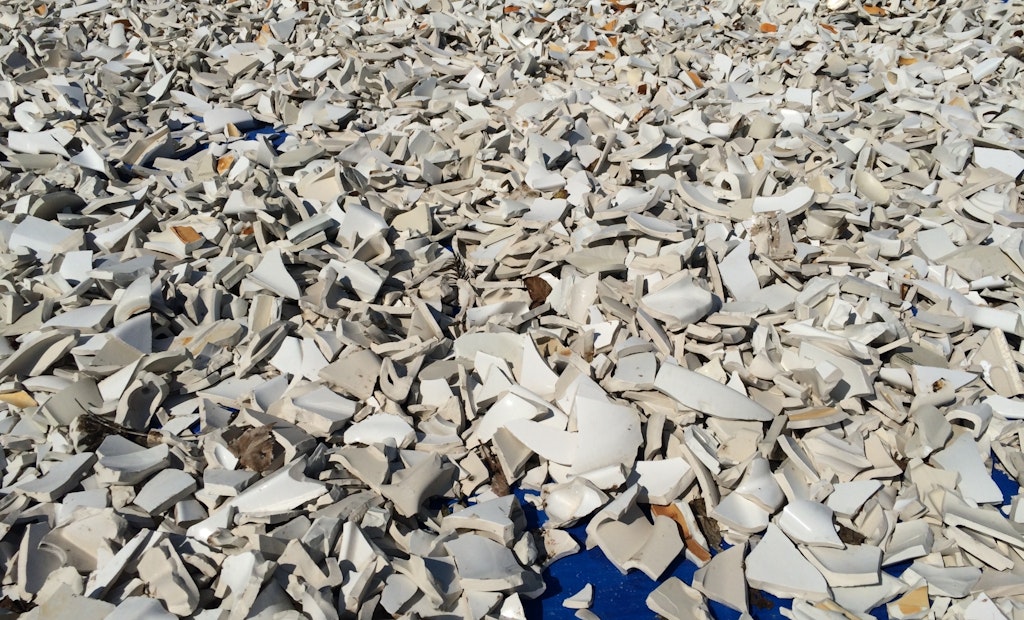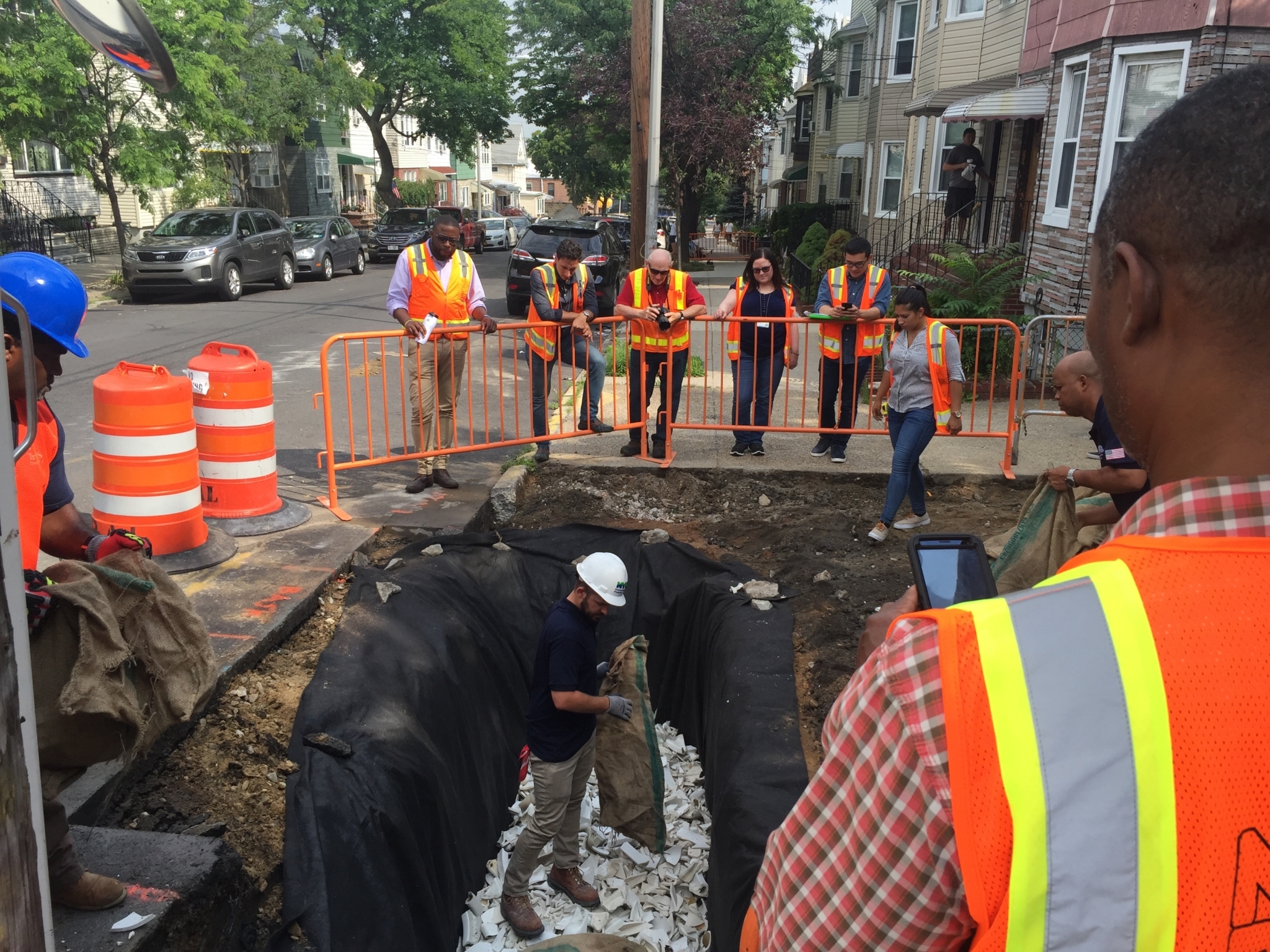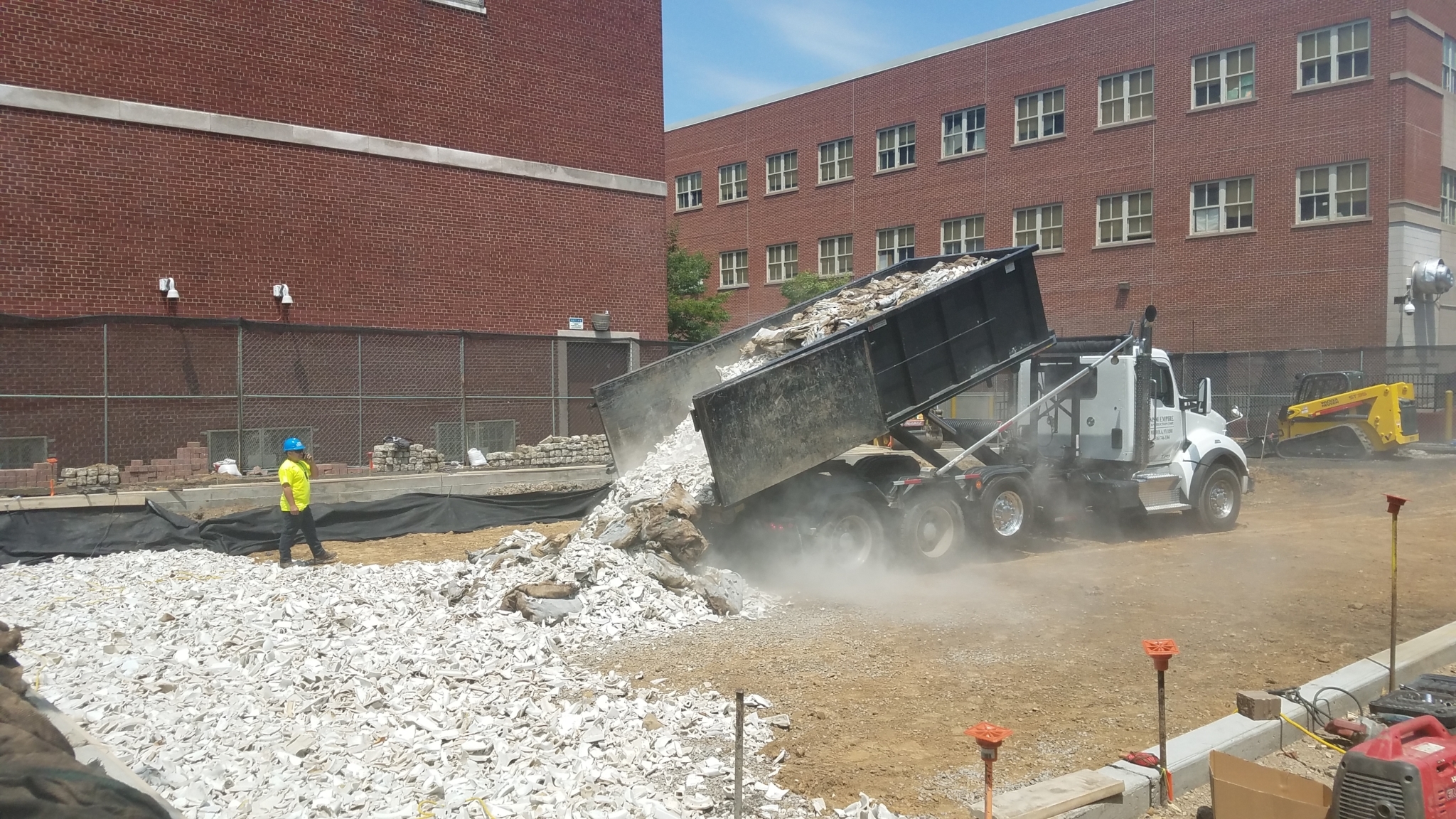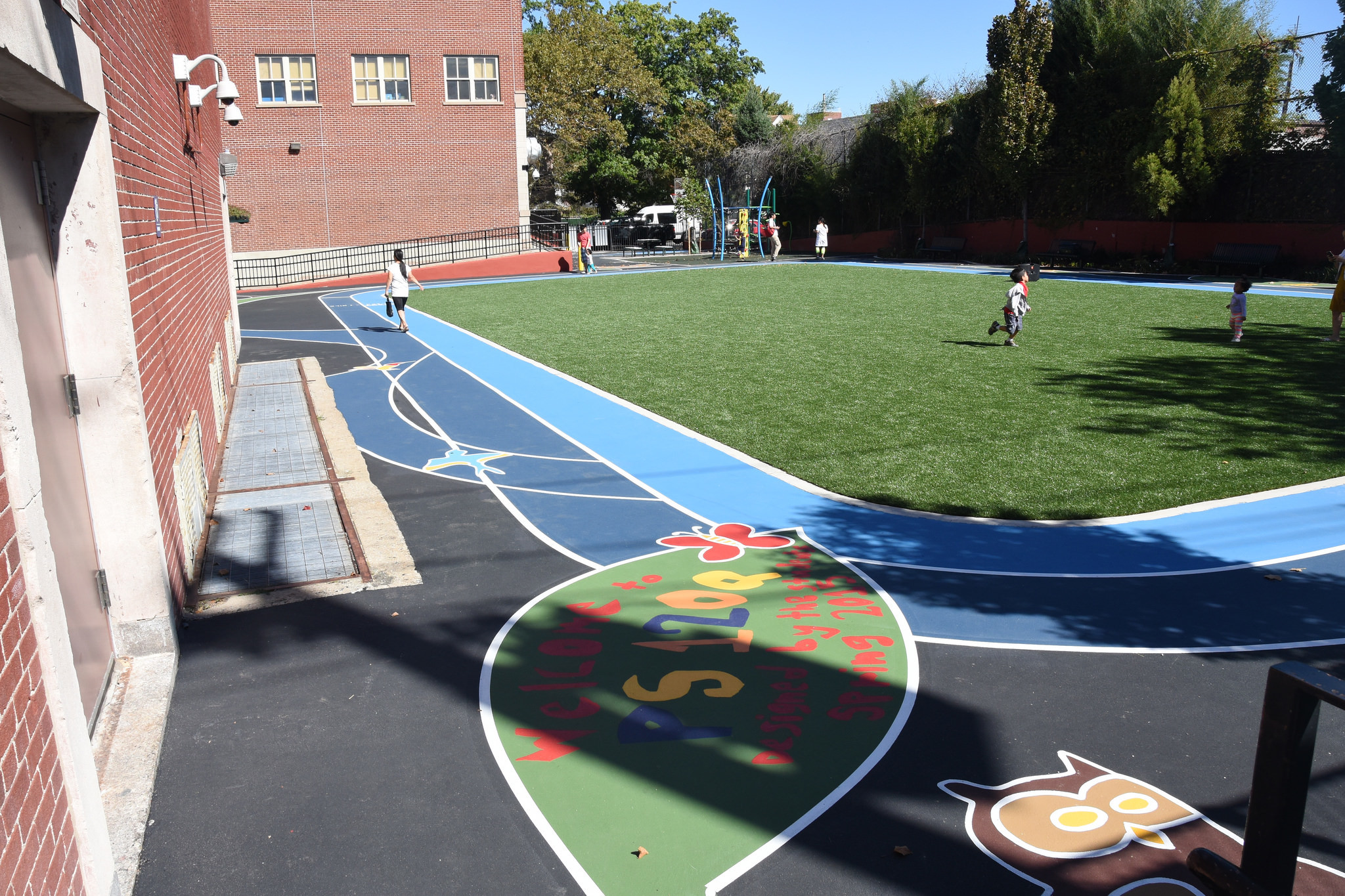
To date, the New York City Department of Environmental Protection has used about 120 cubic yards of recycled porcelain — about 3,500 toilets worth — on green infrastructure projects throughout the city. (Photos courtesy of NYC DEP)
Interested in Stormwater?
Get Stormwater articles, news and videos right in your inbox! Sign up now.
Stormwater + Get AlertsToilets are the unexpected heroes of New York City’s green infrastructure program — yes, toilets.
Not only has New York City been installing thousands of new high-efficiency fixtures throughout its school system, it has also found a way to put the old toilets to work for the green infrastructure program. By recycling the porcelain from toilets that otherwise would have been simply thrown away, the New York City Department of Environmental Protection (DEP) is doubling down on green infrastructure.
The crushed recycled porcelain has been used for several projects, including a series of pilot rain gardens and an environmentally friendly playground.

Ben Huff, DEP water demand program manager, works in one of the pilot rain gardens using some of the recycled porcelain.
“Our goal is to upgrade fixtures in 500 schools, and that would include replacing close to 40,000 toilets, so we realized we would be producing a large waste stream,” says Ben Huff, water demand program manager for DEP.
Multiple plans came together to make this particular project a reality: First, a consent decree to limit CSOs in 2005 led to the need for green infrastructure projects like rain gardens. Separately, a water demand management plan launched in 2013 to prepare the city for the construction of a bypass tunnel and an eventual temporary shutdown of the leaky Delaware Aqueduct so that repairs could be made.
“We are spending money to reduce in-city water consumption,” Huff says.
The toilet replacement project falls under that plan’s purview. The recycled porcelain coming out of that then transitions into the CSO goals and the green infrastructure plan established in 2012.
“That’s what we saw this project doing,” Huff says. “We’re taking the waste of a water sustainability project and beneficially reusing it in a stormwater project, with the ultimate goal of improving water quality in the harbor.”
DEP hasn’t had a chance to fully analyze the new rain gardens to determine the effectiveness of the new material, but it is confident that it will be a cost-effective measure in the long run.
“At the time, it cost more to use the porcelain than crushed stone because we had to process it: crush it, transport it, etc.,” Huff says. “Crushed stone is really very cheap, but we understood the long-term costs could prove to be better using the recycled porcelain.”
Crushed stone is the typical material for rain garden substrate, but Huff believes that porcelain may be even more effective by creating better void space.
“It’s possible it has a greater void space than the stone, just because of the complex shapes of the material,” Huff says. “That hasn’t been proven with any type of test, but I think I would be pretty comfortable with thinking that, depending on how you process it, it could create really good void space.”
Four rain gardens used the material, two at 3.3 cubic yards of material, one at 5.8, and the largest at 7.6 cubic yards. An average rain garden can handle approximately 2,000 gallons of stormwater during rain events.
Recycled porcelain was also funneled back into a green project within the school district: a playground with an artificial turf field. Over 100 cubic yards of crushed porcelain was used as substrate under the turf.

The recycled porcelain was also used in the construction of an artificial turf field for the school district.
The playground also includes green infrastructure elements that capture up to an inch of rainwater during storm events, amounting to about 500,000 gallons per year. According to DEP, this will ease pressure on the combined sewer system and help reduce overflows into Flushing Creek.
In all, about 120 cubic yards of recycled crushed porcelain went toward green infrastructure projects throughout the city, which amounts to about 3,500 toilets.
The toilet replacements are ongoing, which means a nearly continuous stream of waste porcelain should the city choose to continue using it. Another project, an artificial oyster reef constructed in Jamaica Bay in 2015, used porcelain from an additional 6,500 toilets.
“We have used all the porcelain that is currently processed. The toilet replacement program at the schools is ongoing, and may be extended another two years,” Huff says. “There are possibilities of incorporating it into other projects.”
A beneficial use determination permit from the state is ongoing, so Huff and the city are looking for ways to continue recycling this resource. More playground projects are already in the works.
“It’s been an exciting project to work on,” Huff says.
Learn more about the process of crushing the porcelain in this video produced by the New York City DEP.

The final result of the playground that used more than 100 cubic yards of recycled porcelain during construction.





